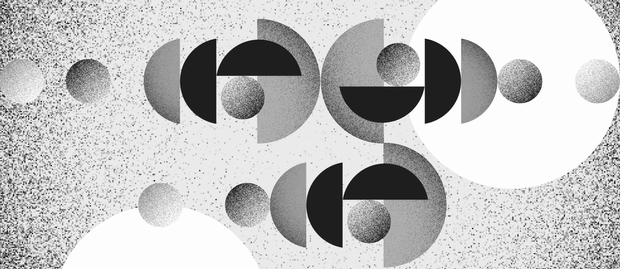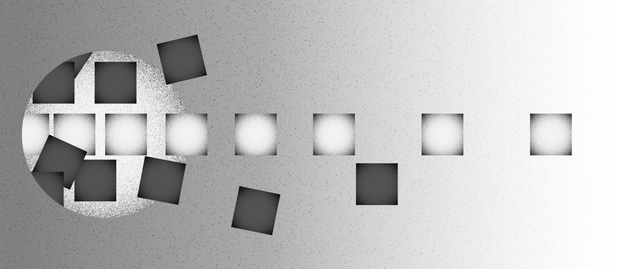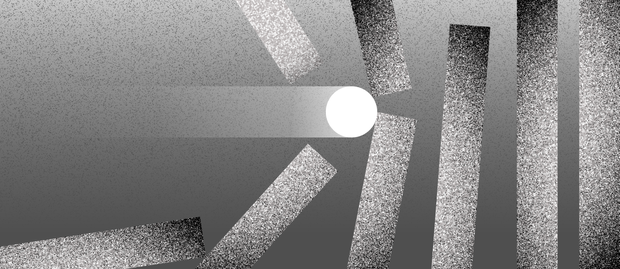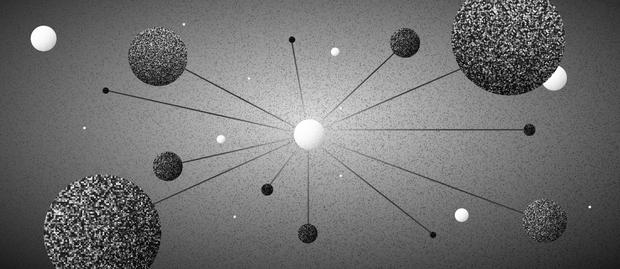
How to Make and Sell NFT Art: Entry into Digital Monetization
While the hype around NFTs may not be as significant as it was a few years ago, these digital assets can still generate thousands, or even hundreds of thousands, of dollars in extra revenue for their creators. This trend is particularly evident in the art industry, which embraced NFTs after the initial backlash decreased, allowing the community to fully realize their true potential.
However, in order to achieve a high return on investment, art institutions must understand what the asset stands for, how to sell NFT art correctly and what options are on the market. In this article, our team will explore NFT technology within the context of the art industry, aiming to assist your organization in harnessing its full potential.
What Are NFTs?
A non-fungible token, better known as an NFT, is a digital asset based on blockchain. Depending on the type of blockchain, it can be used for various purposes. For example, NFTs based on Ethereum or similar blockchains can store data and, in this way, represent ownership over items like paintings, music samples, or other collectibles. In addition, these blockchains provide transparent provenance accessible to anyone through the decentralized ledger at any time.
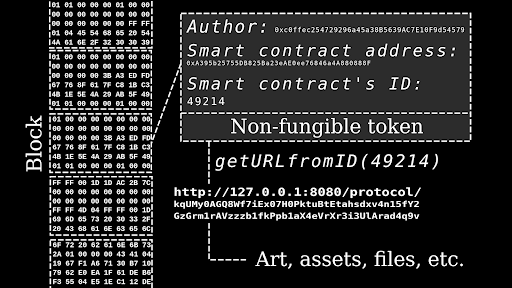
Although NFTs and cryptocurrencies share some similarities, such as the use of blockchain capabilities, it would be incorrect to classify them as the same type of asset. While crypto can be seen as a more advanced form of fiat money, these assets have unique features, making NFT art distinct from one another. Among them are:
- Uniqueness: While an item assigned to an NFT can be identical or similar, each NFT is one-of-a-kind. Every NFT has an individual set of attributes displayed on the blockchain ledger, setting it apart from any other token.
- Accessibility: NFTs can be created, sold, and purchased by individuals or organizations, regardless of their status, financial capabilities, scale, or origin. In addition, existing in the digital realm, they aren't constrained by the limitations of physical distribution and traditional art collecting.
- Smart Contracts: NFTs are usually managed by smart contracts. These scripts automatically execute transactions when the terms of agreements are fulfilled. As a result, creators can earn royalties from secondary sales without having to control NFT distribution.
- Customization: Developers can program NFTs, integrating them with specific functionality. For example, you can offer future NFT owners unique content or passes that become available after the purchase or when certain conditions are met. Moreover, NFTs can be minted with a specific level of scarcity, enhancing the value and desirability of limited editions or unique items.
- Fractional Ownership: Many investors can't afford to spend thousands of dollars on various collectibles. NFT technology resolves this issue by allowing multiple individuals to own assets collectively. This enables, individuals to purchase a fraction of desired assets without spending a fortune. As a result, galleries can engage a wider pool of investors compared to traditional art collecting.
Thanks to these features, investing in NFT art can become an accessible and valuable contribution to the financial stability of your organization.
Who Can Turn Art into NFTs?
As we mentioned earlier, one of the main features of non-fungible tokens is their accessibility. Any individual or organization willing to invest some time and resources to transform their tangible assets into tokens can do so almost immediately. The only requirement that this technology places on investors or creators is a reasonable level of proficiency in blockchain technology. However, nowadays, there are options available that allow interested parties to bypass certain barriers and delegate responsibilities to third parties. You can think of it as digital alternatives for dealerships and auction houses, to which organizations and individuals entrust most of the processes related to negotiations and tokenization.
How to Create NFT Art For Sale in the Digital Realm
Step 1 — Select a blockchain
The market offers a wide variety of blockchains, with Ethereum being the most common and popular among them. It provides a flexible platform suitable for creating NFT art, encompassing the broad range of features we discussed earlier. Nevertheless, art institutions might also consider blockchains like Solana, Cardano, Tezos, BNB Smart Chain, Flow, or Polygon.
Remember that it's impossible to change blockchain if NFT is minted. This is why we recommend conducting thorough research on viable options and choosing the one that best suits your needs and offers more favorable conditions. Alternatively, you can contact experts, such as those at Digitised.Art or other specialized organizations, who can assist you in making the optimal choice.
Step 2 — Create a digital wallet
Just as we require bank accounts, debit cards, and fiat money for online transactions, individuals and organizations must create their own digital wallets that are compatible with blockchain-based assets like NFTs and cryptocurrency. Keep in mind that some wallets might not support certain cryptocurrencies, so your choice should align with the crypto you plan to use in the minting process. In addition, don't forget to fund your digital wallet with the selected cryptocurrency. Otherwise, you won't be able to cover gas, platform, and transactional fees.
Step 3 — Choose an NFT platform
The digital landscape dedicated to NFT art offers a variety of platforms where individuals can mint their NFTs. These platforms include public marketplaces, as well as specialized organizations accessible exclusively to institutions or their affiliated artists. Regardless of available options, NFT creators should thoroughly evaluate each potential platform, compare them, and choose one that suits their goals, scale, chosen blockchain, and wallet.
Step 4 — Create an NFT
Depending on the chosen platform, the steps and interface may vary. Thus, here we present a general concept of the NFT creation process.
- Set up an account and connect your digital wallet. The platform prompts you to do this during registration. Otherwise, check your account settings.
- Find the "Create an NFT" button and click on it. It might also be labeled "Mint an NFT," "Upload an NFT," or something similar. On marketplaces, this button should be the most visible one. Then, follow the provided instructions.
- Upload an item that needs to be integrated into the NFT and fill in the necessary details. Depending on the type of media, there may be various interfaces or pieces of information to input. Usually, the creator will need to provide a name for their NFT, include a description, and set its basic features. In addition, they can offer extra data or perks, such as access to exclusive content or passes to events or private communities. While JPG, PNG, and GLB are the most prevalent formats for NFTs, creators might also have the option to incorporate audio or video.
- Finalize the process by clicking on the "Mint," "Create," or any similar button at the end of the procedure. Before that, we suggest checking all the information once again for any mistakes. Moreover, you might have a change of heart and decide to modify certain features or perks.
Step 5 — Add your NFT to the public list
Once your request has been processed, the platform might not automatically list the NFT for sale. If this happens, access your platform account to locate the newly minted NFT and select an option to make it publicly available for purchase. Depending on the platform, you might need to provide the NFT's price and description once more.
Where to Sell NFT Art In the Digital Landscape
As mentioned in the previous section, the digital landscape provides numerous platforms for buying and selling NFT art. However, when considering all of these platforms, it’s possible to categorize them into two main groups.
Marketplaces
These platforms host both individuals and organizations, allowing them to store, sell, and purchase their tokenized pictures, paintings, music, photos, and other collectibles. On the one hand, they offer a low entry threshold, enabling even small creators to participate in NFT trading. On the other hand, they often provide less assistance in creating your own NFT art compared to specialized organizations, and they have a history of being a source of plagiarized or even stolen NFTs. While there are numerous marketplaces, they can be categorized into three main types:
- General Marketplaces: These NFT marketplaces cater to a general audience and offer NFTs spanning a wide range of topics and styles. They are also more accessible than other types of marketplaces. Notable examples include OpenSea and Rarible.
- Art Marketplaces: In contrast to their general counterparts, platforms dedicated to art concentrate on higher-end artworks and subject pending NFTs to a certain level of selection. These NFTs can feature digitized real-life paintings or photos, as well as digital artworks. Some of the most popular art marketplaces include SuperRare, Nifty Gateway, and Foundation.
- Utility Marketplaces: These marketplaces are often paired with blockchain-based games that feature collectibles, thereby enhancing the in-game economy and centralizing transactions on the associated platform. A non-blockchain-related example is the Stream marketplace, where players can purchase in-game items or convert them into real-world currency. In the realm of blockchain-based utility marketplaces, notable examples include NBA Top Shot, Sorare, and Axie Infinity.
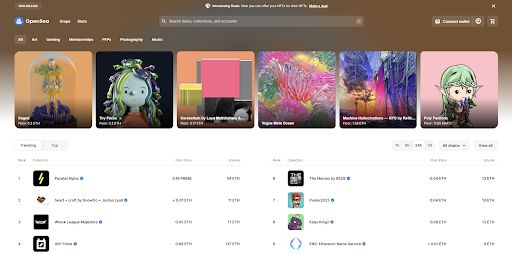
Specialized organizations
Another option, targeted more at art institutions and their affiliated artists, involves specialized organizations. These companies combine the roles of auction houses and dealerships to facilitate negotiations between organizations and buyers. In comparison to general and art marketplaces, they meticulously select and curate their collections, significantly reducing the possibility of encountering stolen or plagiarized artworks. An example of such an organization is Digitised.Art, which dedicates its resources to promoting both old and modern artworks, facilitating deals, and assisting companies in tokenizing their assets.
While specialized organizations often maintain a higher level of exclusivity compared to art marketplaces, they offer unique opportunities for their partners and provide a more personalized approach to selling art as NFTs. Moreover, they can lower the threshold even further, as they don’t require their partners to be technically proficient in blockchain technologies. At the very least, they will be able to introduce it to the team responsible for tokenizing artwork.
As evident from our intro article, making and selling NFT art isn’t as complex as it might seem. The industry provides numerous platforms and opportunities for entering NFT trading without the need to adjust your art institutions' infrastructure. On the contrary, NFT art benefits make these assets invaluable resources for generating extra revenue and cultivating a new group of supporters. So, don't miss out on this exceptional opportunity — let's embark on the journey to your first NFT artwork!
Related articles

